Have you been wondering how many carbs are in coffee? These coffee charts will make sure you’re not sabotaging your low-carb diet?
The Ultimate Guide To Carbs In Coffee will teach you everything you’ve ever wanted to know about how to order your coffee, which is the cheapest and how to reduce the carbs in your coffee.
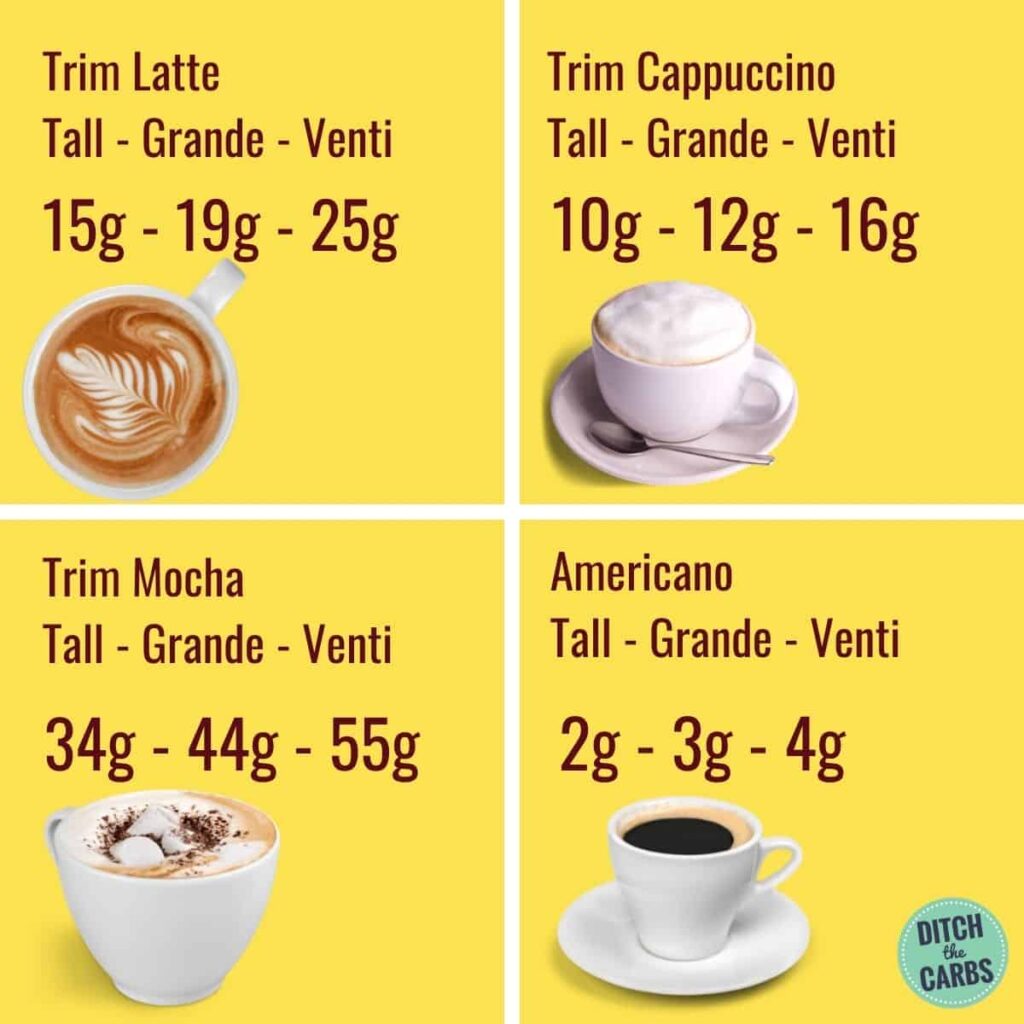
Do you want to know which coffee is the best to order, and which coffees you should avoid?
It all depends on what you put in your cup! If you are drinking your coffee black, chances are you’re perfectly fine. However, you have to know exactly what you can add to your coffee and still be safe to drink when on a keto diet.
Are you ready to lose weight and heal your body for life (without dieting, drugs, or making yourself miserable)?

Our free on-demand video training will walk you through how to make this THE year you set health goals…and keep them.
Then read on and look at the full infographic at the end of this post.
Are there carbs in coffee?
Yes, there are carbs in coffee but it depends on how your coffee is made. The carbs in a cup of black coffee will depend on the method used. So an instant coffee will have fewer carbs than an espresso coffee.
Will coffee kick me out of ketosis?
Black coffee in itself does not have a negative or positive impact on a keto diet. It’s the high volume of milk added to the coffee shop favorites such as lattes, cappuccinos, and flat whites that can raise your blood sugars and kick you out of ketosis.
Milk has 12g carbs in 1 cup (244g). So you might want to think twice when ordering a large milky coffee that could have 2-3 cups (or more). That’s 24g-36g carbs per latte. That’s more than some people’s daily carb limit for an entire day of food!
Does that mean we should give up our coffee beverages?
NO! Just learn how to order your coffee the right way.
For many of us, it’s one of the few things that can wake us up in the morning and set the right tone for the day! So while it may be advisable to ditch the milky lattes and cappuccinos at the local coffee shop, I’m definitely not advocating avoiding coffee on keto.
How to choose the right coffee to stay in ketosis
Where there is a will, there is a way which is why I present to you my ultimate guide to carbs in coffee.
If you are noticing you are knocked out of ketosis mid-morning but can’t understand why (especially if you have been fasting) … well, chances are it was your milky coffee in the morning that carb-loaded you out of ketosis.
Being better informed about the carb count in different varieties of coffee means that you can make a healthier decision when ordering a coffee or making one at home.
Ordering keto coffee at coffee shops
Once you learn how to order the best keto Starbucks drinks, you can create a secret keto Starbucks menu (if you learn these hacks).
I’ve created this handy coffee comparison chart (see below) to help you better understand the carb count in various coffees that are typically sold by most local coffee shops.
The nutritional values for this chart have been sourced from Starbucks, one of the most frequented coffee franchises in the U.S. But you will find similar nutritional values at your local coffee shop.
A safe option is to order freshly brewed black coffee. If black coffee isn’t your preference though, there is always the option of requesting 1-2 tablespoons of cream to be added which then totals carbs in coffee up to about 1g net carbs per cup. Not bad, right?!
My favorite coffee order (how to save carbs AND money
My go-to coffee order is always an Americano (long black) with a small side jug of hot water and a small side jug of full-fat heavy cream.
What’s the hot water for? Well as I add the cream to my coffee, I also add hot water. The hot water does two things, it keeps my coffee hot after the addition of the cream PLUS I manage to get my coffee fix with 2 cups of coffee for the price of 1.
The carbs in those two cups = 1g-2g total. How genius is that?
Almond milk is also a great option to liven up your black coffee as it contains the least amount of carbs which will then free up your macros for the rest of the day!
But as always, read the nutrition label (if making it at home) or ask the coffee barista to make sure they give you almond milk that has no added sugars.
How to make keto coffee at home
If you prefer making coffee at home before getting your day started, then it’s worth being aware of where there may be hidden carbs. Avoid excess milk, some artificial sweeteners, and some sugar alcohols that still raise blood sugars.
Even some sugar-free coffee flavoured syrups still contain sweeteners that raise blood sugars (hint hint, it’s maltitol). So take a close look at what’s in your pantry and throw them in the garbage. You’ll thank me for it.
Step AWAY from the syrups! Yes, even the “sugar-free” syrups have added sweeteners that are not keto-friendly.
You may be adding sugars to your coffee without perhaps even realizing the added hidden carbs!
The best sweeteners for keto coffee
A lot of store-bought sweeteners that claim to be low-carb are in fact not appropriate for keto and will most likely throw you out of ketosis so be very careful when reading the back of packing for ingredients. In particular, anything with the terms “dextrose”or “maltodextrin”should be avoided as they act as fillers that spike insulin levels.
The two best sweeteners that you might want to add to your coffee are stevia and erythritol. They are keto-friendly and lack that horrible aftertaste that most other sweeteners are responsible for. However it is completely a personal choice. Many in my Facebook group will swear one is better over the other.
Further reading: My Ultimate Guide To Sweeteners – which sweetener to use and which to avoid.
The best dairy-free milk in coffee
While many of us enjoy some milk in our coffee, it’s not always the best option when trying to ensure that macro counts do go over the daily threshold.
Now, while there are only 4g total carbs in a 100ml serving of milk, if you like to enjoy having a few coffees throughout the day and are also including sweeteners, you can see how this can quickly add up which means that you’ll have to really reduce your carb intake in your meals for the day.
This can be quite a challenge and is potentially unnecessary to have to battle with since there are great alternatives to milk that tastes great without the added guilt or stress.
Best non-dairy milk alternatives
#1. Almond Milk
The first option that immediately comes to mind is almond milk which has already been mentioned at the beginning of this post.
Always check to confirm you are buying unsweetened almond milk, many are loaded with sugars to give it flavor and texture.
#2. Coconut Cream or Milk
Coconut milk or cream is also a great option. Again, check for sugars such as coconut sugar, it’s still sugar!
For a delicious dairy-free coconut keto coffee, be sure to check out my recipe. It’s not only dairy-free but also gluten-free, paleo-appropriate with no added sugar and comes to a total of 4g carbs per serving.
#3. Keto Coffee Creamers with MCT Oils
Keto creamers that contain MCT (Medium-Chain Triglycerides) oils are also well known to avid keto dieters and for good reason. It is one of the ingredients used in the famous “bulletproof coffee”which is typically extracted from coconut oil and is more easily digested within our bodies.
The difference in the way the body processes the MCTs contributes to calories being burnt and enables the body to use the MCTs as a source of energy instead of fat storage as a source of energy.
If you are unfamiliar with bulletproof coffee, it is essentially a combination of freshly brewed coffee with unsalted butter and MCT coconut oil which have associated links to higher energy levels and performance throughout the day for those drinking it.
There are many keto creamers out there that include MCT oil powder and oil that can be added to your coffee, shakes and even salads!
#4. Unsalted Butter or Coconut Butter
Butter coffee has been introduced in the bulletproof coffee movement but it can also be a great substitute for dairy milk in other coffee varieties such as a latte. My Keto Pumpkin Pie Latte is a great example of this.
I’d recommend skipping soy milk and whipped cream as they are likely filled with added sugars and carbs.
How much coffee should you drink?
While The Ultimate Guide To Carbs In Coffee has established that coffee alone doesn’t have any negative or positive impact on the keto diet. But, it’s clear that all the added ingredients such as creamers or milk and sweeteners can all quickly add up. This is especially true you are in the habit of drinking 3 or more cups per day.
At the end of the day, being aware and educated about what you are consuming, is key to any successful diet.
As long as you are keeping check of your daily macros and the threshold to keep you in nutritional ketosis then there really is no prescribed amount of coffee that one can or cannot consume. Monitor how YOU respond. Everyone reacts differently.
Some readers manage to stay in ketosis easily no matter how much coffee they consume. Others can be knocked out with just 1 or 2 cups.
There are other health concerns that coffee drinkers mention. It may affect blood pressure, stress levels, cortisol levels, and your ability to sleep if consumed later in the day. So carbs in coffee are not the only factor to consider.
Carbs in coffee chart
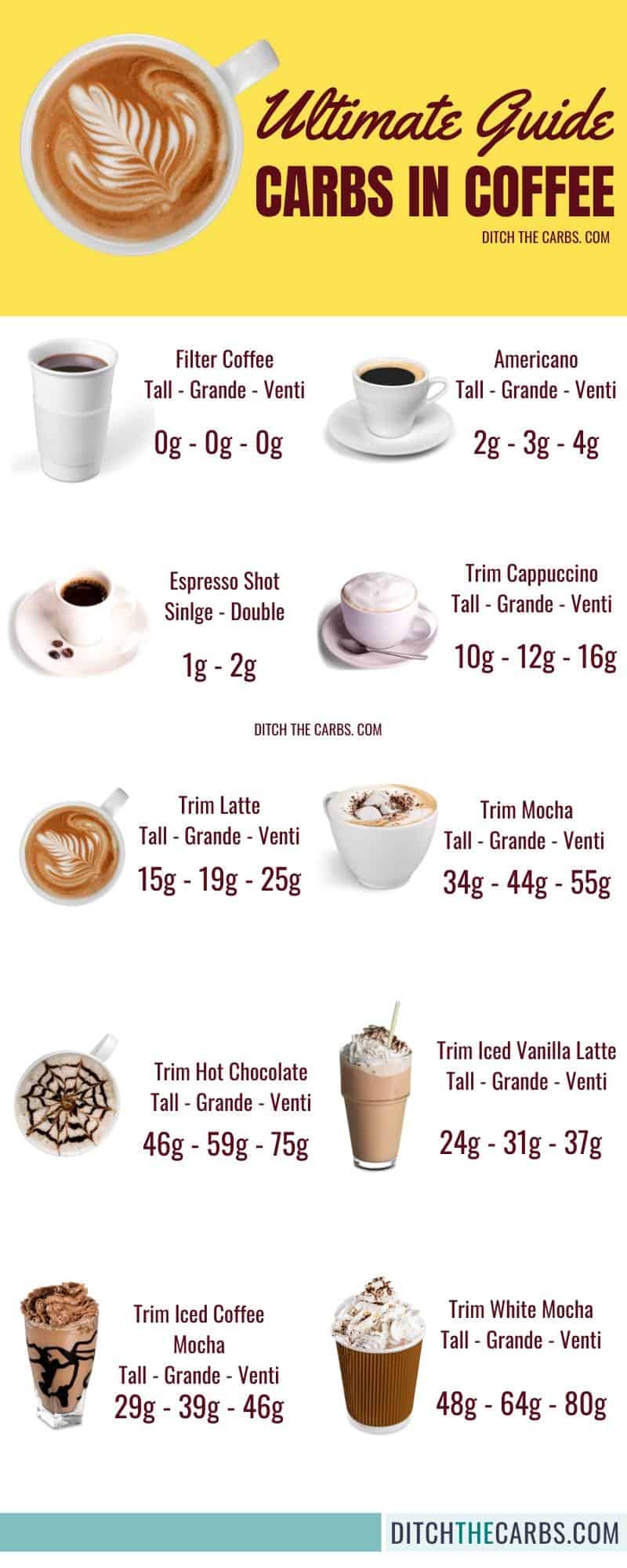
Reference: Starbucks Global Assets – Coffee Nutrition Information
Why do some black coffees have carbs?
You can view a similar discussion on carbs in black coffee in our Facebook group.
So you will notice that a filter black coffee has 0g carbs, whereas an espresso shot has 1g and an Americano has 2g. What gives?
It all comes down to the brewing methods.
Coffee beans have fat, protein, carbs and fibre. How much ends up in your morning cuppa will depend on how your coffee has been made. Spoiler alert, in reality, the carb value for all black coffees are pretty negligible.
Filter coffee is made with hot water dripping through the coffee grinds, so negligible carbs come through from the beans. Whereas an espresso is made with boiling water forced under pressure through the coffee grinds, extracting more of the bean than a filter coffee would. An Americano is 2 espresso shots.
So now you understand why some black coffee is zero and some are 2g. The good news is, that most of these teeny weeny coffee grinds will end up at the bottom of your cup and so very little will be ingested.
Confused? But wait … there’s more.
Some carb values are calculated and some are from nutritional databases. So if you look at 10 apps, you’ll get 10 answers for black coffee.
Takehome message: In reality, black coffee has negligible carbs. Phew.
How are carbs calculated by food manufacturers?
Did you know that carbohydrate values in a nutrition label are not actually measured … but calculated?
First, a portion of food will be tested for how much fat, protein, ash, water and alcohol it contains. Then the remainder is calculated to be the carbohydrate value. It looks a little like this.
100g — (weight in grams of [protein + fat + water + ash + alcohol] in 100 g of food) = Total Amount of grams of carbohydrates
Hence there can often be a discrepancy between what the label calculates a food to have, and how much it actually has. PLUS the nutrition label does not take into consideration how much is absorbed by our gut, how much passes through, and what settles to the bottom of our coffee cup.
Pretty confusing right? Then, of course, there are nutrition labels that are calculated from nutrition databases.
Reference:
- How Do We Know Exactly How Many Carbs Are In Food?
- Methods for food analysis
- What is lazy keto … and should you try it?
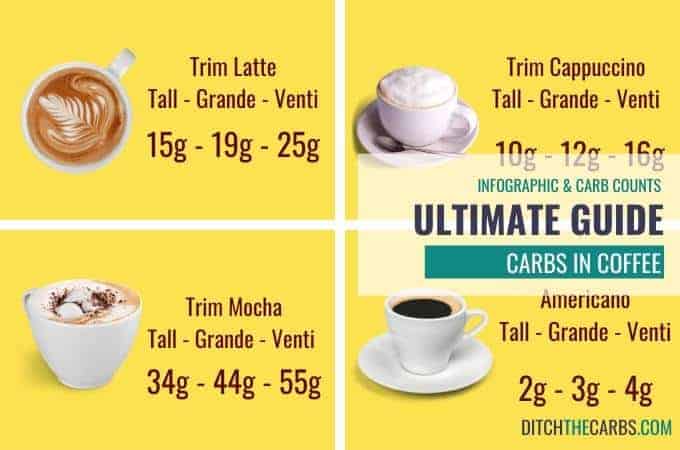
Carb-friendly coffee recipes
For more delicious coffee recipes – check out the recipes listed below. (some are dairy/dairy-free). My favourite is the coffee walnut bar and the sugar-free mocha cups. The perfect way to enjoy even more of your favourite coffee flavours.
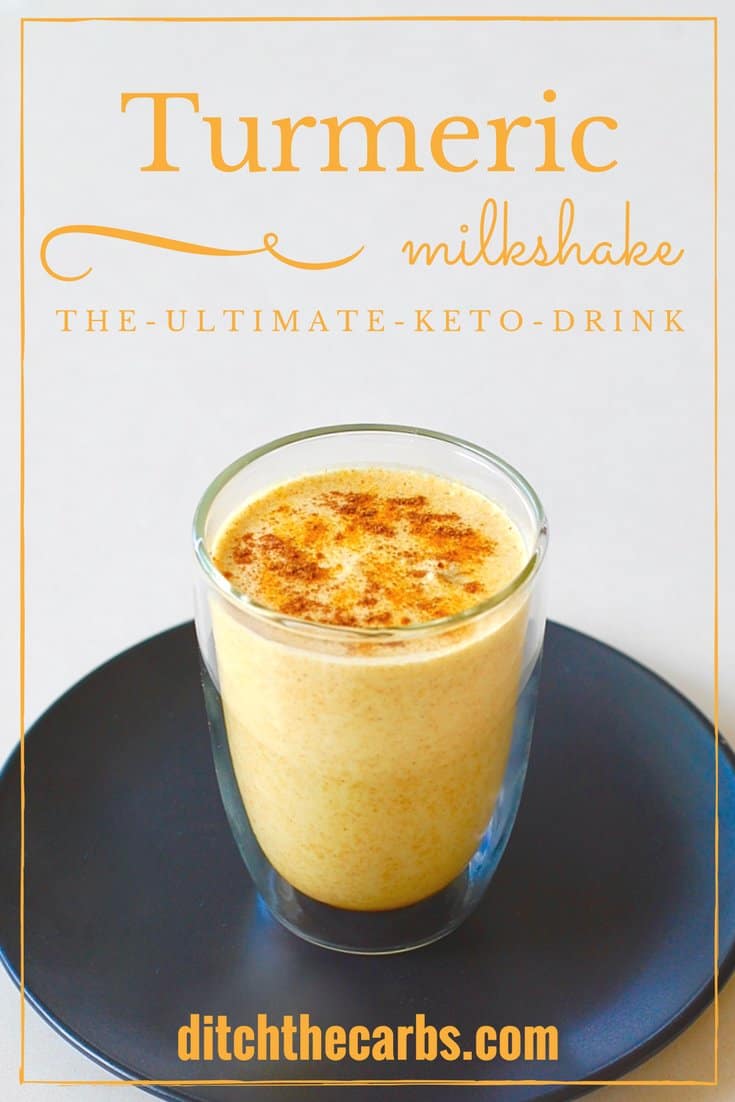

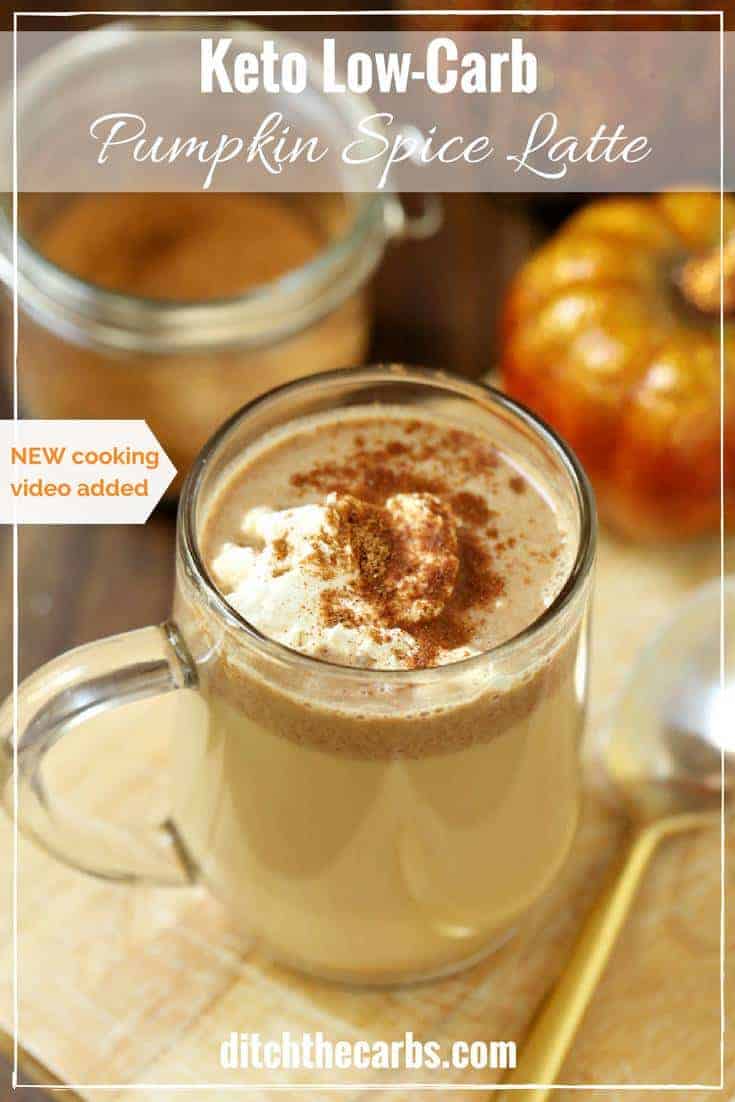
What if you could actually take control of
your health in just 10 days?
It’s not your fault you can’t lose weight as a woman over 40 even though you’ve likely tried literally everything. Your metabolism probably feels broken and your hormones are likely all out of whack.
But you can fix it all with ONE simple change: eliminate sugar. We make it super easy with daily lessons teaching you the science behind what makes us gain weight in our midlife and beyond! Are you ready to get started now?










Just found you on IG and I ❤️❤️❤️ your content- thank you!
My pleasure, and welcome to Ditch The Carbs 🙂
Hi, I just wanted to let you know that an americano is not “two espresso shots,” which you wrote above. Espresso shots can be pulled as single, double, or triple shots depending on the portafilter and if it has a splitter or not. Most cafes is the US pull double shots as a matter of course but can often split the shot in two with the splitter on the portafilter. When you order an espresso shot, unless you specify, it will probably be a double shot in most cafes. An americano is simply an espresso shot (single, double, or triple, etc) with hot water added to it. You could have a single americano or a double one. Or a triple or quadruple one. None of this really changes any of the nutritional content you were discussing (as you said, is negligible) – except caffeine content, obviously – but it was probably misleading or confusing to some readers. What determines the quantity of espresso in your drink is always the portafilter it was pulled through (which affects how much of the ground beans are used), not the end size of your drink. You can also order a long shot, which is a shot pulled lungo (for longer) rather than ristretto (for a shorter time) and end up with more liquid but the same amount of espresso.
The writer was correct. In a tall Starbucks americano, there is two shots of espresso. Grande has 3 shots and venti has 4. Each shot is 1 carb.
Libby,
What about monk fruit as a sweetener… supposed to have ZERO effect on glucose? What instate truth?
Yes, monk fruit is a great sweetener. You can see my Ultimate Guide To Sweeteners here. Which sweeteners do I love (and avoid).
What about cold brew? I read in several places that cold brew has the most carbs, but I still don’t understand why. Fiber?? Surely not starch…